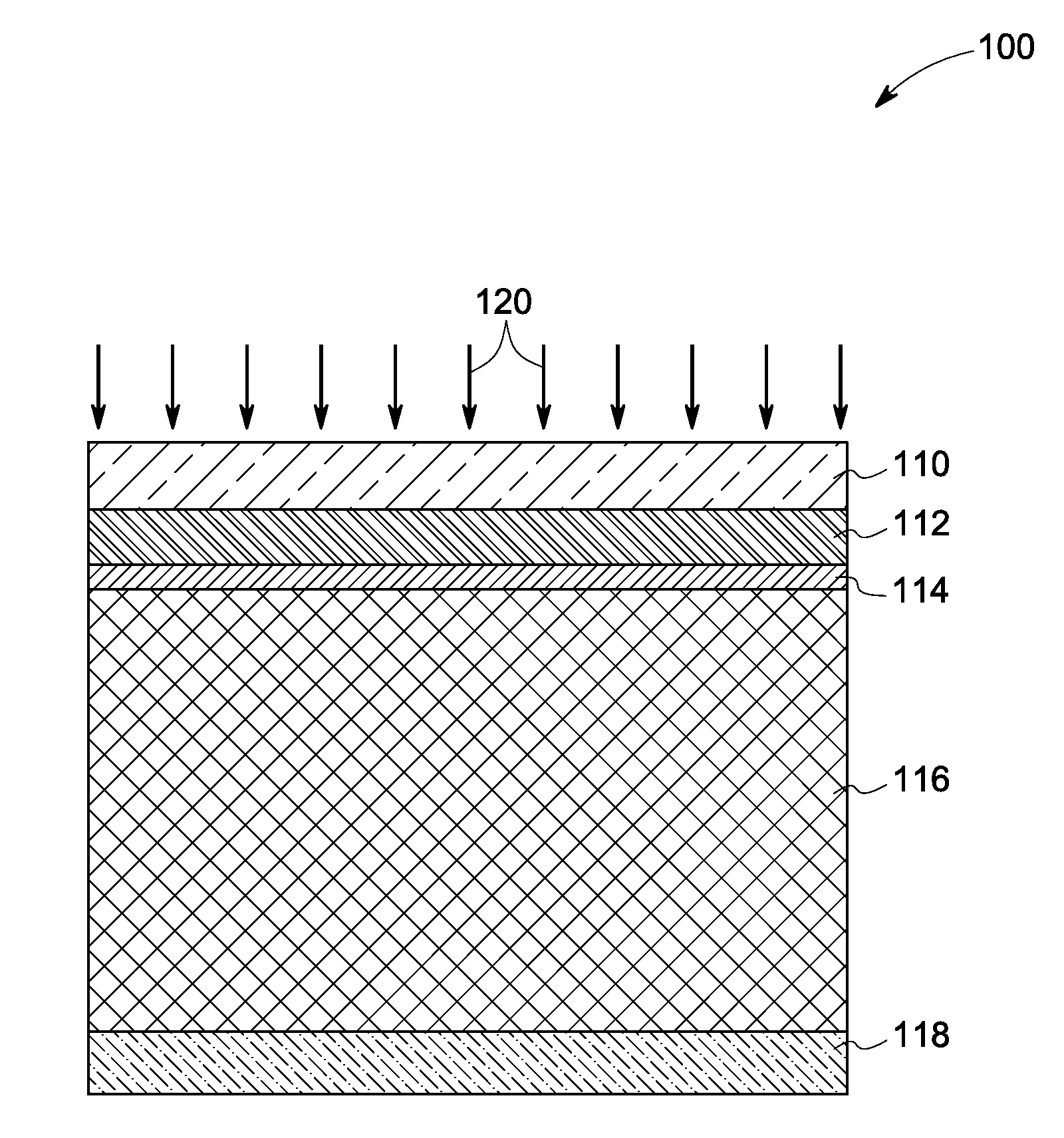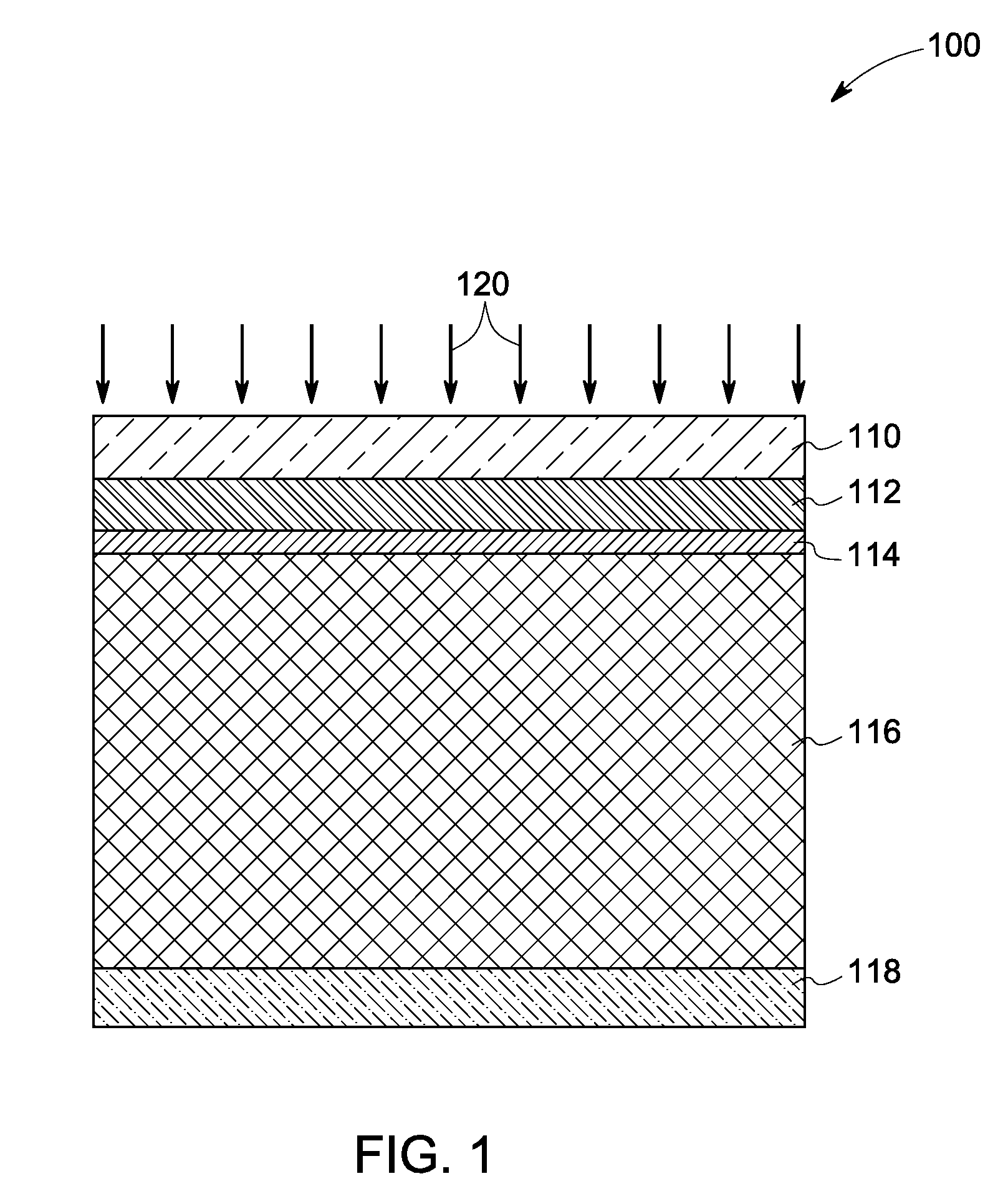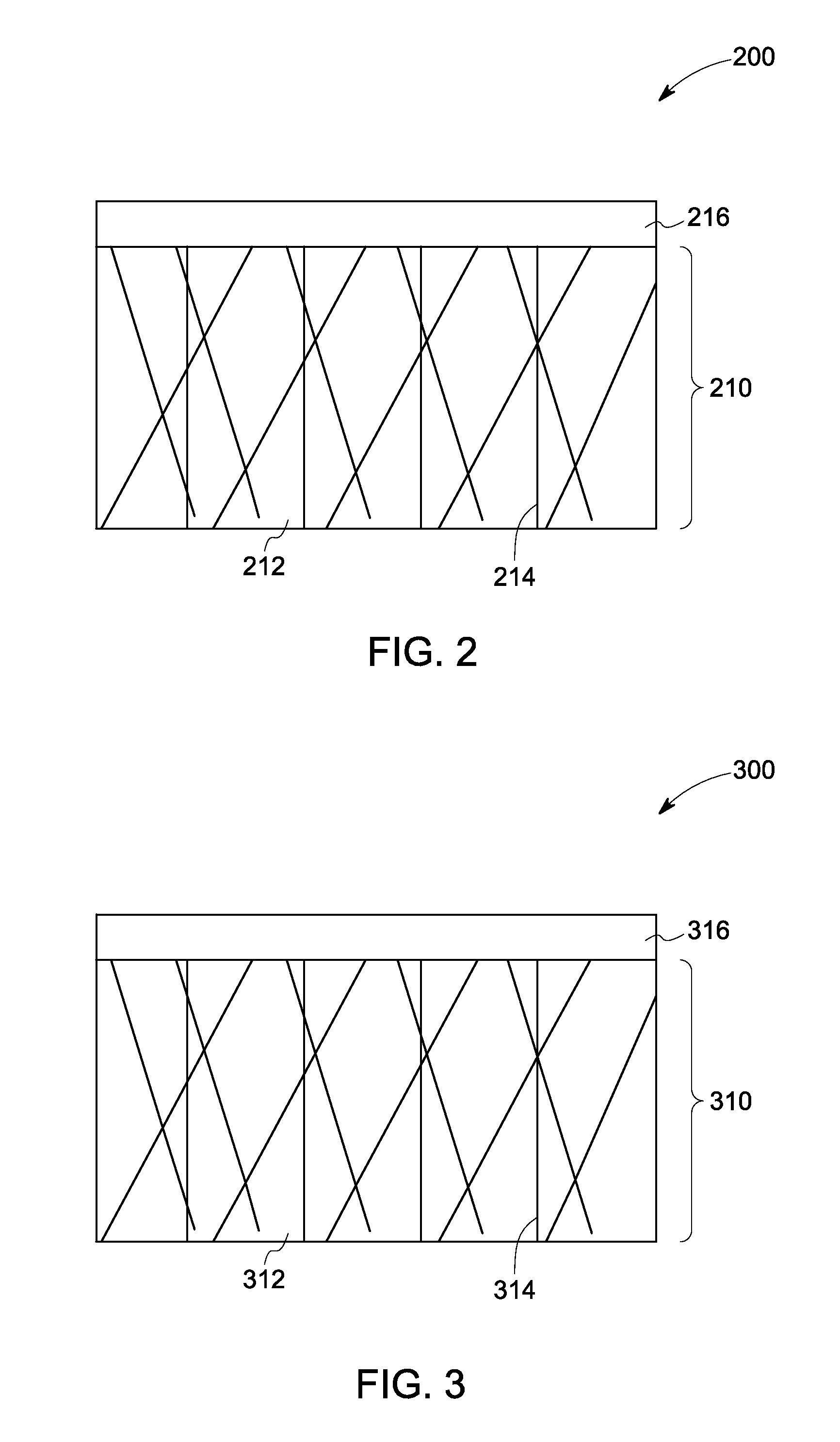Layer for thin film photovoltaics and a solar cell made therefrom
a solar cell and thin film technology, applied in the field of photovoltaics, can solve the problems of inefficient use of available solar energy to produce electricity, and high cost of conventional solar cells, and achieve the effect of reducing the cost of conventional solar cells
- Summary
- Abstract
- Description
- Claims
- Application Information
AI Technical Summary
Benefits of technology
Problems solved by technology
Method used
Image
Examples
Embodiment Construction
[0018]Cadmium telluride (CdTe) based solar devices known in the art typically demonstrate relatively low power conversion efficiencies, which may be attributed to a relatively low open circuit voltage (VOC) in relation to the bandgap of the material. This is due to the fact that the effective carrier concentration in CdTe is too low. Traditionally, the performance of a CdTe-based device has been explained by assigning bulk properties to the CdTe. However, there are increasing indications that the device performance is primarily controlled by the properties of the grain boundaries, and thus bulk properties only present an effective collective value of the whole film forming the solar cell.
[0019]Embodiments of the invention described herein address the noted shortcomings of the state of the art. The device described herein fills the needs described above by employing a doping method that will permit the addition of active dopants to the grain boundaries that will result in a layer wit...
PUM
| Property | Measurement | Unit |
|---|---|---|
| grain boundaries | aaaaa | aaaaa |
| concentration | aaaaa | aaaaa |
| transparent | aaaaa | aaaaa |
Abstract
Description
Claims
Application Information
 Login to View More
Login to View More - R&D
- Intellectual Property
- Life Sciences
- Materials
- Tech Scout
- Unparalleled Data Quality
- Higher Quality Content
- 60% Fewer Hallucinations
Browse by: Latest US Patents, China's latest patents, Technical Efficacy Thesaurus, Application Domain, Technology Topic, Popular Technical Reports.
© 2025 PatSnap. All rights reserved.Legal|Privacy policy|Modern Slavery Act Transparency Statement|Sitemap|About US| Contact US: help@patsnap.com



